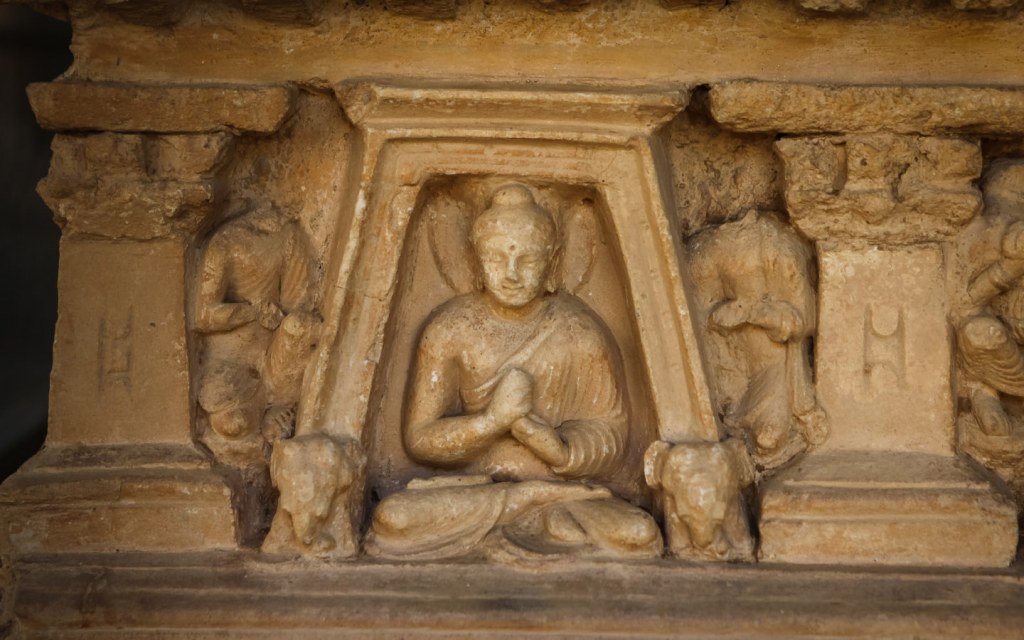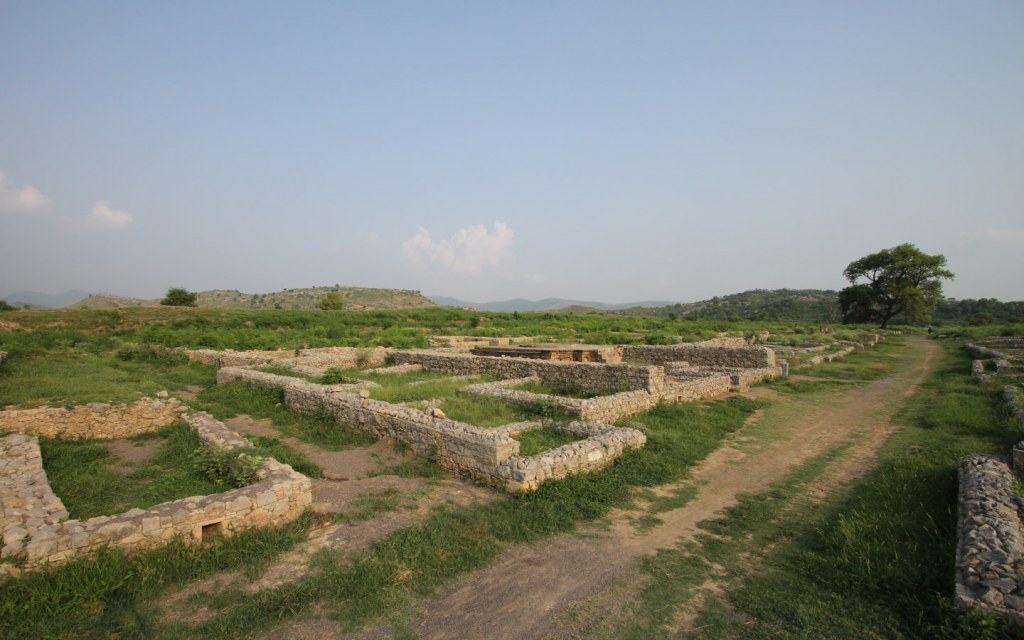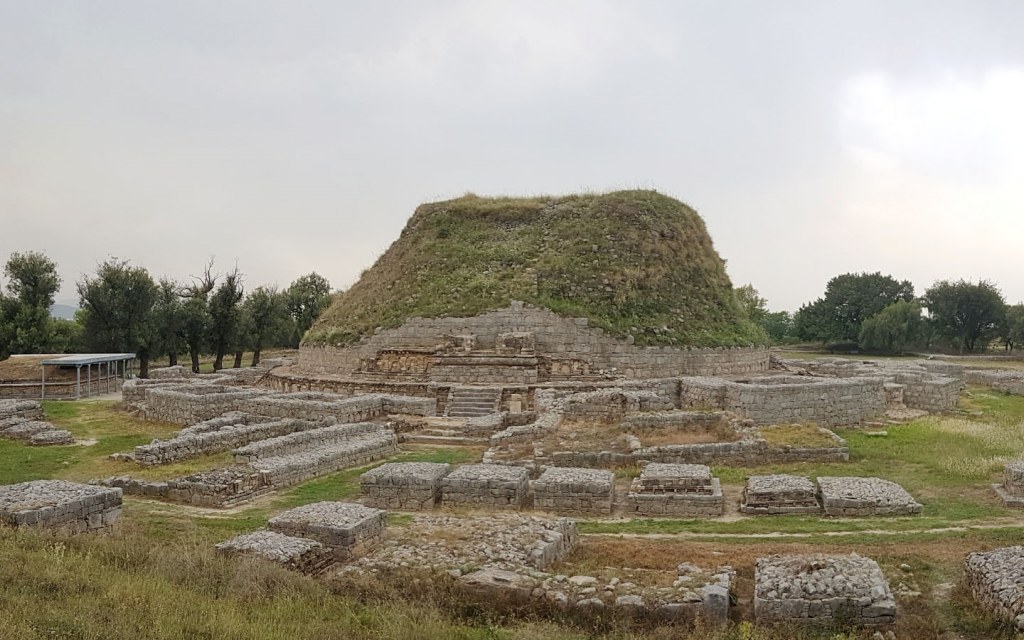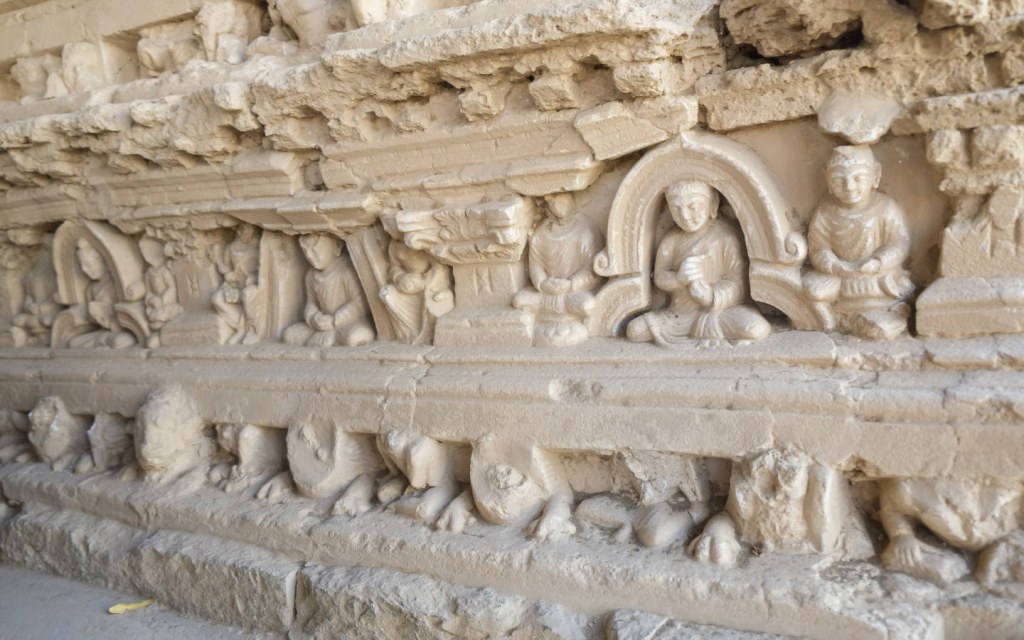Are you interested in exploring Taxila and discovering the architecture and history that it holds? If that’s the case, here’s all that you need to know to plan your trip to this historic city.
History of Taxila
Taxila was an ancient city located in what is now considered the province of Punjab in Pakistan. It has been a UNESCO World Heritage Site since 1980 but was initially discovered by the archaeologist Alexander Cunningham in the mid-1800s. The city was originally called Takshashila, meaning the ‘City of Cut Stone’ based on the construction style that was dominant throughout the settlement.
Historically, Taxila was an important city in the Kingdom of Gandhara which was present in the region from about 1000 BC to 1000 AD. Taxila was then governed under several different empires, with each wanting to benefit from the convenient trade route it offered within South and Central Asia.
Today, the new city of Taxila is a fairly modern settlement spread around and amongst the ruins of a bygone era. Transport is easily available locally for those who wish to explore all its historical wonders.
Where is Taxila Located and How to Get There?
The city of Taxila is located some 30 kilometres from the twin cities of Rawalpindi and Islamabad, near the edge of the Potohar Plateau. Travelling along the Grand Trunk Road from either of these cities can easily take you to this ancient metropolis. The road also connects to the National Highway, making Taxila accessible to all commuters from the south of Pakistan as well. Driving from Islamabad to Taxila can take around an hour. Meanwhile, travelling by road from Lahore can be a journey of approximately 5 hours.
While travelling by car is an option, buses from Rawalpindi or Islamabad can get you there as well. An alternative to driving is to catch a train from anywhere in Pakistan that will drop you off at the railway junction near Taxila’s museum.
Things to Do in Taxila—Excavated Sites and Other Attractions

The city is purely famous for its ruins and remnants of the Buddhist era, which was the dominant religion of the time. However, Jain and Hindu temples and relics have also been found here.
The city was initially discovered by Alexander Cunningham. The excavation was then undertaken by John Marshall, who was the Director-General of the Archaeological Survey of India at the time. He was also the person who discovered the ancient city of Mohenjo-Daro in Sindh. Under his command, the excavations took about twenty years, from 1913 to 1934, and have uncovered a range of sites that are worth a visit. Let’s discuss these in detail below:
Bhir Mound
Archaeological evidence shows that Taxila comprised three major cities. Bhir Mound was the first of these and contains the oldest ruins from the 5th and 6th century BC to the 2nd century BC.
The city shows early construction of wood and stone houses with mud plaster and a central main street amidst the dwellings on its eastern side. The drainage system for the houses was also well planned in this area. The building of key importance is the Pillared Hall that dates back to 250-175 BC. It contained figurines of deities and terracotta reliefs upon its excavation. It is believed to have been an early temple of the Hindus. The western part of Bhir Mound was excavated at a later date and shows the old city walls made of mud and wood.
Sirkap

Another city within Taxila is named Sirkap after a local legend. It was once a walled city, having strong and thick fortifications. The primary construction of residences here, give off a Greek influence, with the city dating back to the 2nd century BC. The ruins of note here are:
- Circular Stupa, which is considered to be the oldest in the Indian subcontinent.
- Apsidal Temple, a Buddhist temple having a large round room that gives the ruin its shape.
- Double-Headed Eagle Stupa, a magnificent shrine supported by Corinthian columns and having a motive of an eagle having two heads.
- Jain Temple, ruins of a temple of the followers of Jainism that dates back to the 2nd century BC.
- Remains of a Sun Temple can also be found here.
Sirsukh
The third city of Taxila is named Sirsukh and was built in the later part of the 1st century BC. The city is rectangular in shape on an open plain with strong limestone walls defending the city from intruders. Bastions are also present within the wall, from where archers could shoot down their enemies in ancient times.
Dharmarajika Stupa

Dharmarajika Stupa is a 15-metre high Buddhist structure that was built in the 3rd century BC. It had a monastery for Buddhist monks nearby. The locals know it as ‘Chir Tope’ or ‘Scarred Hill’ as well. The stupa is well preserved and is a major tourist destination. The excavation of the stupa also uncovered many relics and remains that hold significance for people of the Buddhist faith.
Kunala Stupa
Located on the remains of an older stupa, the Kunala Stupa dates back to the 3rd or 4th century AD. It was visited by Buddhist pilgrims from all over due to the legend associated with it that praying here cures eye impairment.
Mohra Moradu Stupa
This stupa is located in a complex that is fairly well preserved and contains a monastery as well as a votive stupa. The monastery was once a double storey building with 27 rooms for the students, along with a pool having steps on all sides, a kitchen as well as a large assembly hall. It was initially built in the 2nd century AD, with renovations being done over the years.
Jaulian Stupa

Jaulian Stupa is another 2nd century AD establishment of the Buddhists and is surrounded by the ruins of a monastery as well as a university. The complex is built on a hill overlooking Taxila. Its most prominent find is the statue of a Healing Buddha which has a hole in its navel from a time when people used to put their fingers in the hole while praying for a cure from various ailments.
Jandial Temple
Visibly similar to a Greek temple, the ruins of Jandial Temple are a sight to be seen. While the exterior construction has definitely been influenced by the Greeks, relics and building patterns inside have led the experts to believe that this was a place of worship for followers of the Zoroastrian faith.
Taxila Museum
While exploring Taxila, travellers should not skip a visit to Taxila’s Museum as it holds most of the artefacts and relics recovered from the area during excavations. It has a large collection of Gandharan Art and thousands of other objects on display. The collections mostly date from 600 BC to 500 AD and it is open all year round.
Other Sites to Explore
As Taxila has a very rich history, there are a number of other smaller sites that you can visit during your trip as well. Some of these places of interest are:
- Khanpur Cave, an archaeological site and a cave from the Mesolithic era that is 25 feet wide and 10 feet deep. Many tools from earlier times have been found in this location hidden high up on the hill.
- Sarai Khola, which is a mound that offers evidence of prehistoric settlements in the area, going as far back as 3300 BC or more.
- Khader Mohra, an area that has seen limited excavation and is located south-east of Dharmarajika.
- Kalawan, an archaeological site containing some small stupas and a monastery, along with a few caves.
- Giri Complex, which contains a number of Buddhist monasteries, along with the remains of a three-domed mosque, a tomb, a school and a fort, built around the 10th to 14th century AD.
- Lalchak, Badalpur, Pippala and Bhallar, which each have their own stupas as well as monasteries in the surrounding region.
Taxila offers a lot of exploration opportunities to those who are keen on making the trip. If you want to bring back some souvenirs for your loved ones, you can find small statues of Buddha, as well as replicas of artefacts, coins and other trinkets at one of the many souvenir shops.



